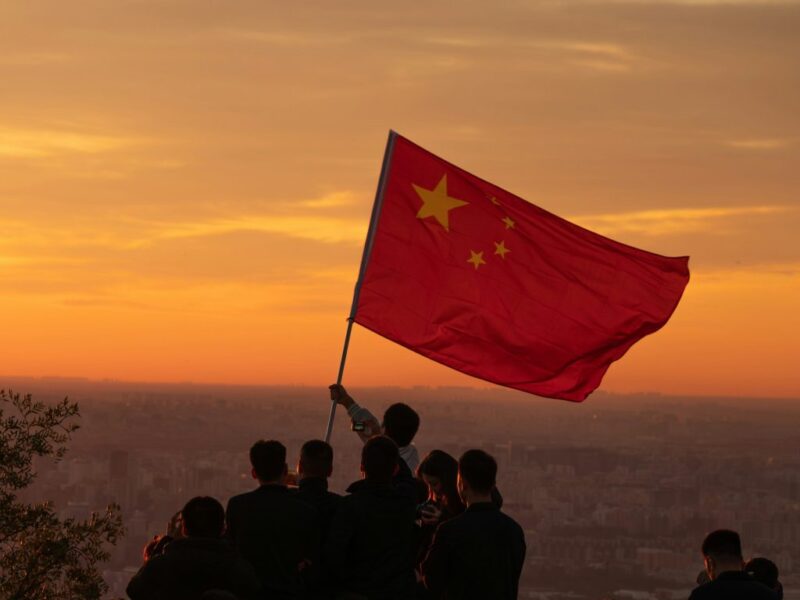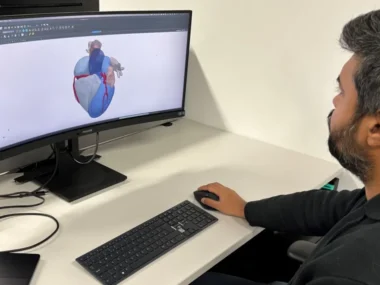China’s tech companies are set to drive the adoption of the MCP (Model Context Protocol) standard, which aims to transform AI assistants from basic chatbots into robust digital helpers.
MCP functions as a universal connector, allowing AI assistants to interact directly with popular apps and services. This capability enables them to perform tasks such as making payments, booking appointments, checking maps, and gathering information across different platforms on behalf of users.
According to the South China Morning Post, companies like Ant Group, Alibaba Cloud, and Baidu are rolling out MCP-based services, positioning AI agents as the next evolution beyond chatbots and large language models. However, the question remains: will China’s adoption of MCP truly revolutionize the AI landscape, or is it merely another step in the technology’s progression?
Why China’s MCP adoption matters for AI’s evolution
The Model Context Protocol (MCP) was first introduced by Anthropic in November 2024, initially described as a standard that links AI agents to systems where data is stored, such as content repositories, business tools, and development environments.
MCP functions as a “USB-C port for AI applications,” according to Ant Group, acting as a universal connector that enables AI agents to integrate with various systems.
This standardization is especially important for AI agents like Butterfly Effect’s Manus, which are designed to autonomously execute tasks by creating plans with specific subtasks using available resources.
In contrast to traditional chatbots, which simply respond to queries, AI agents with MCP can interact actively with different systems, gather feedback, and adapt their actions based on that feedback.
Chinese tech giants lead the MCP movement
China’s adoption of MCP by tech giants emphasizes the growing importance of AI agents as the next phase in artificial intelligence:
Ant Group, Alibaba’s fintech arm, has introduced its “MCP server for payment services,” enabling AI agents to connect with Alipay’s payment platform. This integration allows users to effortlessly make payments, check payment statuses, and initiate refunds using simple natural language commands, as stated by Ant Group.
Furthermore, Ant Group’s AI agent development platform, Tbox, now supports the deployment of over 30 MCP services, including those for Alipay, Amap Maps, Google MCP, and Amazon Web Services’ knowledge base retrieval server.
Alibaba Cloud has launched an MCP marketplace on its AI model hosting platform, ModelScope, offering more than 1,000 services that connect to mapping tools, office collaboration platforms, online storage services, and various Google services.
Baidu, China’s leading search and AI company, has expressed that its support for MCP will create “abundant use cases for [AI] applications and solutions.”
Beyond chatbots: Why AI agents represent the next frontier
China’s adoption of MCP marks a shift from large language models (LLMs) and chatbots toward more advanced AI agents. As Red Xiao Hong, founder and CEO of Butterfly Effect, explained, AI agents are “more like a human being” compared to chatbots.
Unlike chatbots, which merely respond to questions, AI agents “interact with the environment, collect feedback, and use that feedback as a new prompt.” This capability is seen as a key differentiator by companies pushing the AI frontier.
While chatbots and LLMs are limited to generating text and answering queries, AI agents can take action across multiple platforms and services. They represent a significant step forward, transforming conventional AI applications from simple tools into autonomous systems capable of completing complex tasks with minimal human input.
The rapid adoption of MCP by Chinese tech companies signals their recognition of AI agents as a new avenue for innovation and business opportunity, extending beyond the capabilities of existing chatbots and language models.
China’s embrace of MCP could place its tech companies at the forefront of practical AI deployment. By standardizing how AI agents interact with services, these companies are creating ecosystems where AI can offer more integrated, comprehensive user experiences.
Challenges and considerations of China’s MCP adoption
Despite the advancements in China’s adoption of MCP, several factors could influence the standard’s long-term impact:
- International standards competition: While Chinese tech companies are rapidly adopting MCP, its global success hinges on widespread acceptance. Since the protocol was originally developed by Anthropic, it may face competition from alternative standards that could emerge from other major AI players such as OpenAI, Google, or Microsoft.
- Regulatory environments: As AI agents gain more autonomy, particularly in tasks involving payments and sensitive user data, regulatory scrutiny is likely to increase. China’s evolving regulatory landscape for AI will play a critical role in shaping MCP’s future, with authorities’ responses to these advancements being crucial.
- Security and privacy: The integration of AI agents with multiple systems through MCP introduces potential new vulnerabilities. Ensuring strong security measures across all connected platforms will be vital to maintaining user trust and protecting data privacy.
- Technical integration challenges: While universal connectivity is an appealing concept, integrating diverse systems with different architectures, data structures, and security protocols presents significant technical hurdles. Overcoming these challenges will be essential for MCP’s widespread implementation.
The outlook for China’s AI ecosystem
China’s adoption of MCP represents a strategic investment in AI agents as the next phase of artificial intelligence. If successful, it could expedite the practical application of AI in daily life, significantly changing how users engage with digital services.
As Red Xiao Hong pointed out, AI agents are built to interact with their environment in ways that more closely mimic human behavior compared to traditional AI applications. This ability to interact and adapt could be the key to bridging the gap between narrow AI tools and the more generalized assistants that tech companies have long envisioned.











